Table of Contents
ToggleIn the ever-evolving world of cloud computing, businesses often find themselves at a crossroads: should they choose Software as a Service (SaaS) or Platform as a Service (PaaS)? It’s like deciding between pizza and tacos—both delicious but serving different cravings. SaaS delivers ready-to-use applications, perfect for those who want to dive straight into productivity without the hassle of installation. On the other hand, PaaS offers a playground for developers, letting them build and deploy their own applications with ease.
Understanding these two models isn’t just for techies; it’s crucial for anyone looking to streamline operations and boost efficiency. With the right choice, businesses can save time, money, and maybe even a few hairs from pulling out in frustration. So buckle up and let’s explore the quirky yet vital differences between SaaS and PaaS that could shape your digital future.
Overview of SaaS and PaaS
SaaS and PaaS represent two key models in cloud computing for businesses. Each offers unique capabilities that cater to different needs.
Definition of SaaS
Software as a Service (SaaS) delivers software applications over the internet. Users access these applications through a web browser, eliminating the need for installation or maintenance. This model often includes subscription-based pricing, allowing businesses to scale easily. Popular SaaS examples include Google Workspace and Salesforce, which provide users with tools for productivity and customer relationship management. Organizations benefit from automatic updates, reduced IT overhead, and quick deployment.
Definition of PaaS
Platform as a Service (PaaS) offers a platform for developers to build, deploy, and manage applications. This model provides a comprehensive environment, including infrastructure and development tools. PaaS enables rapid application development by streamlining coding, testing, and deployment processes. Notable PaaS providers include Microsoft Azure and Heroku, which cater to various programming languages and frameworks. With PaaS, businesses gain flexibility, accelerated innovation, and reduced complexity in application development.
Key Differences Between SaaS and PaaS

Understanding the distinctions between SaaS and PaaS helps organizations choose the right solution for their needs.
Delivery Model
SaaS delivers fully functional software over the internet. Users access applications through web browsers without the need for installation. Subscription-based pricing ensures that costs align with usage levels. Automatic updates enhance user experience effortlessly. In contrast, PaaS provides a development platform that includes infrastructure and services. Developers create, test, and deploy applications on this platform. PaaS offers greater flexibility for customization, allowing for unique application features.
Use Cases
SaaS fits organizations requiring immediate access to applications. Common use cases include email, customer relationship management, and project management. Examples like Google Workspace and Salesforce illustrate its versatility. Alternatively, PaaS appeals to developers wanting to build applications from scratch. It supports a variety of tasks from coding to deployment. Industries such as finance and healthcare leverage PaaS to create tailored solutions that respond to specific business demands.
Advantages of SaaS
SaaS offers numerous advantages that attract organizations seeking efficient software solutions.
Cost-Effectiveness
Cost-efficiency stands out as a primary benefit of SaaS. Organizations avoid hefty upfront costs associated with traditional software licenses. Instead, subscription models offer predictable monthly expenses. Savings extend to IT infrastructure as companies reduce reliance on extensive hardware. Furthermore, automatic updates eliminate the need for expensive software upgrades, keeping applications current without additional investment. Users can access various software tools without high initial capital outlays, making SaaS an appealing choice for startups and small businesses.
Accessibility
Accessibility is another key advantage of SaaS. Users can access applications from any location with internet connectivity, enhancing remote work capabilities. Organizations benefit from a consistent experience across devices, as web-based applications ensure compatibility with various operating systems. Real-time collaboration features facilitate seamless teamwork among distributed teams. Additionally, SaaS applications typically require minimal setup, allowing quick onboarding for new users. This ease of access ultimately improves productivity and fosters a more agile work environment.
Advantages of PaaS
PaaS offers several significant advantages that can enhance a business’s development process.
Development Flexibility
PaaS provides a high level of development flexibility. Developers can choose from various tools and frameworks that best fit their needs without being confined to a particular environment. This freedom allows for quick adjustments, ensuring that applications evolve in response to user feedback. Rapid iteration becomes possible, reducing the time from concept to deployment. Integration with third-party services is seamless, enabling developers to enhance functionalities without extensive rewrites. As a result, teams can focus on innovation rather than infrastructure management, streamlining workflows significantly.
Scalability
Scalability stands out as a notable advantage of PaaS. Organizations can easily scale their applications up or down based on current demands, ensuring resources align with usage patterns. This capability allows businesses to respond quickly to varying workloads without overprovisioning resources. PaaS providers offer automatic scaling features, meaning application performance remains stable even during peak usage. Therefore, as customer bases grow or new features roll out, teams can accommodate increased demands efficiently. This responsiveness supports overall business expansion without the complexities often associated with traditional hosting environments.
Choosing between SaaS and PaaS ultimately depends on a business’s specific needs. SaaS offers immediate access to fully functional applications, making it ideal for organizations seeking quick solutions without the burden of maintenance. On the other hand, PaaS provides a robust environment for developers to create and manage custom applications, perfect for those needing tailored solutions.
Understanding these differences empowers businesses to make informed decisions that enhance operational efficiency. Whether opting for the convenience of SaaS or the flexibility of PaaS, each model presents unique advantages that can drive innovation and growth. The right choice can lead to significant improvements in productivity and resource management.







